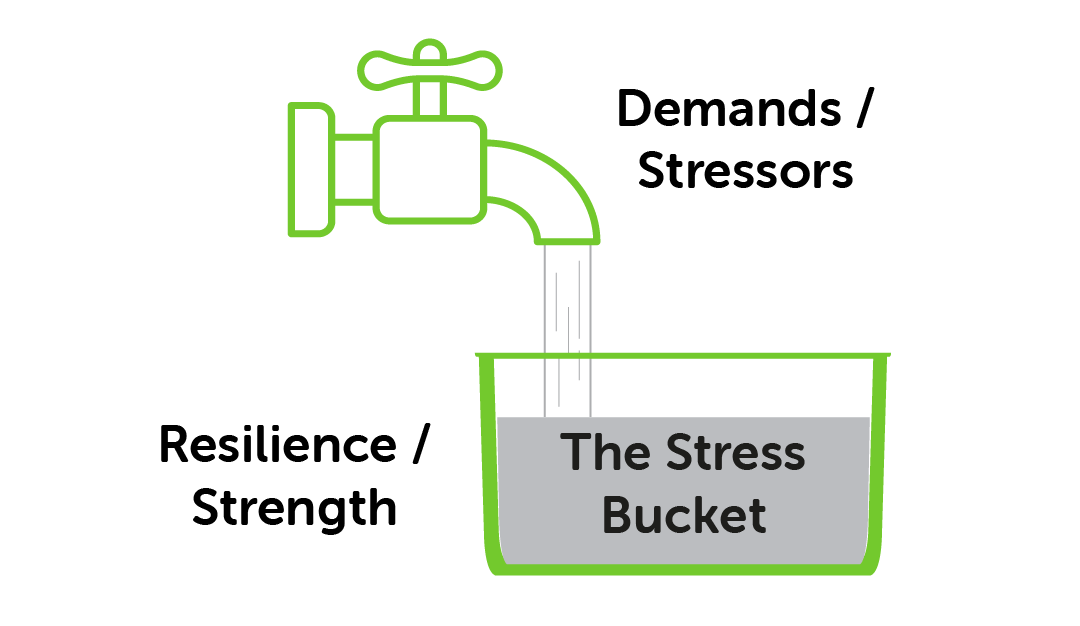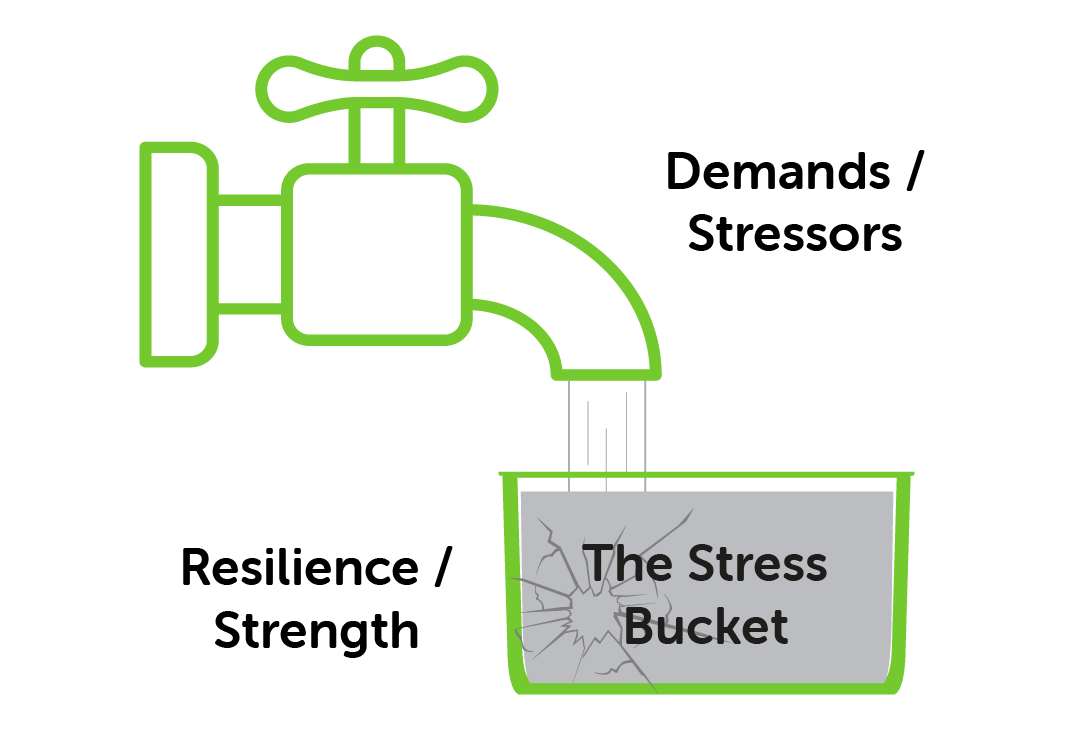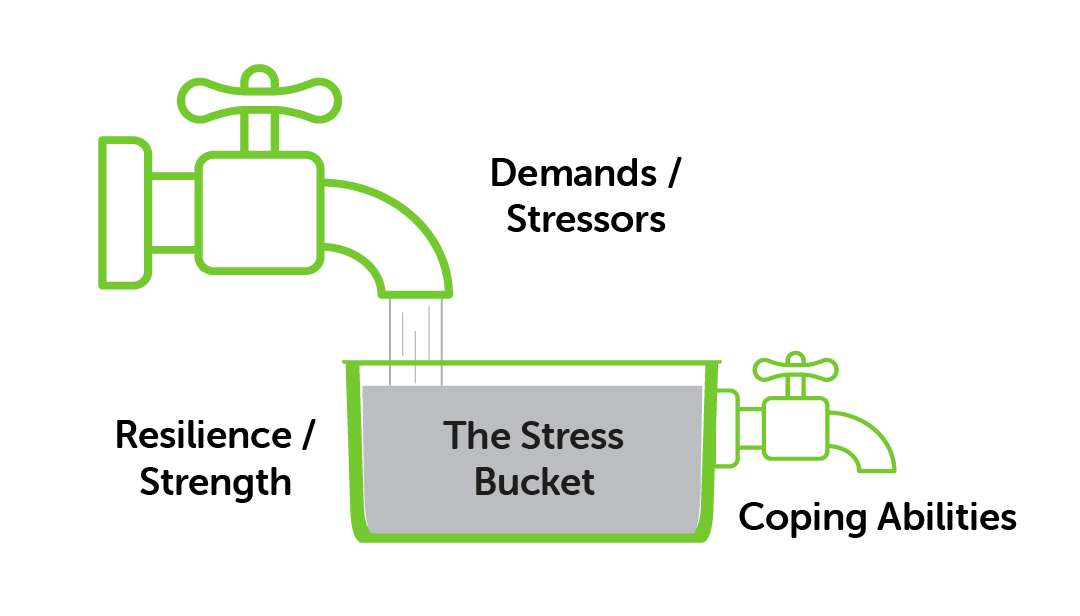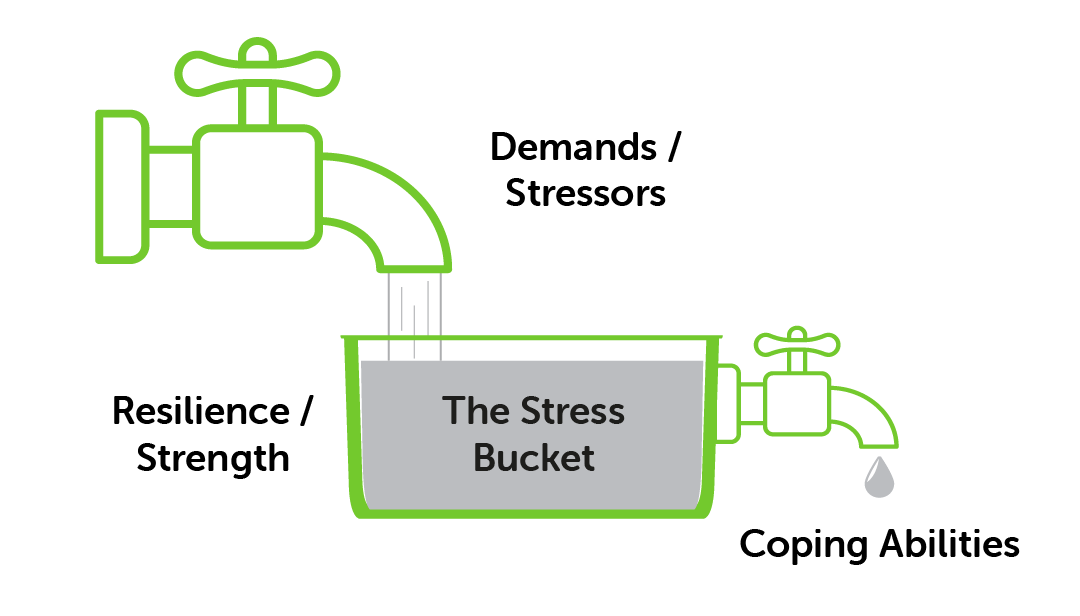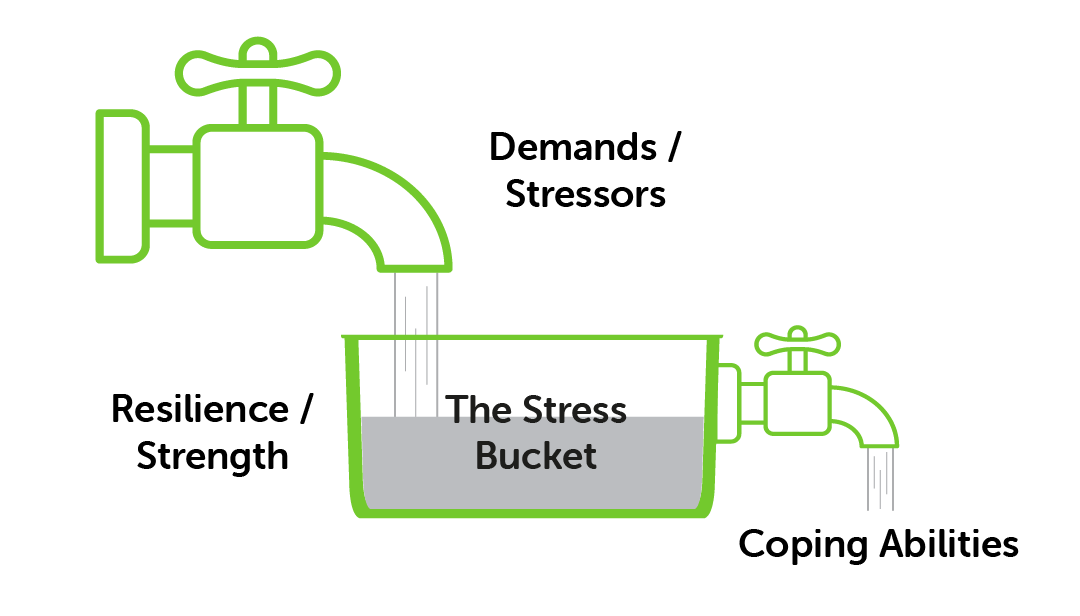The Stress Bucket – Managing Stress
July 17, 2021 | by Charlotte Linham
The ‘Stress Bucket’ analogy is one of the most commonly used and simplest ways we have in psychology to think of our sources of stress, and what we can do about them. Generally, we can think of stress as any change that causes us some kind of emotional strain, and it’s our brain’s way of telling us that we need to manage our stress or take some time to recuperate. It can also be a result of managing multiple competing demands for a long period of time. Everybody experiences stress at some point in their lives.
We can think about ourselves as the ‘bucket’ – we can all handle some stress, but the exact amount is unique to the individual and associated factors. These are things like our genes, our life experiences and our environment. For example, children have slightly smaller ‘buckets’, and therefore they may need their parents to take on a little bit of their ‘water’. The ‘water’ coming into the bucket is all of the demands or ‘stressors’ that we experience during our lives and broadly, there are 4 sources of stress:
- Interpersonal stress – this is stress from relationships with people around you – like friends, family, colleagues and partners or even your wider network.
- Intrapersonal stress – this is stress from internal factors, like our mental health, our beliefs and thoughts about ourselves, spiritual difficulties, or physical health problems.
- Work stress – this can be academic, or work-related, and comes from having deadlines, studying, and general pressures and expectations.
- Environmental stress – this is stress from any external situation or difficulties in your life or in society, like unemployment, financial difficulties, the pandemic, or social issues.
The aim is to keep the ‘water’ from overflowing and coming out of or breaking the ‘bucket’. If it does, it’s a sign we’ve reached our stress ‘limit’ and we need to do something to empty some of that water or fix our bucket quickly. These times can often be known as a crisis point or burn out. Trying to maintain our stress levels below this point helps us to build our resilience to difficulties, without any negative effects. It’s important to remember that some amount of stress is actually good for us – it helps provide us with the motivation to do things and can increase our performance for certain tasks.
So, how do we let the water out of the bucket it and stop it overflowing?
The taps at the bottom of the ‘bucket’ are our coping strategies. We know some coping strategies are more positive than others – we can think of the more negative ones as more of a hole than a tap. This means although they do let water out, it also damages our ‘bucket’ and affects our ability to cope with stress. Negative coping strategies tend to be avoidance focused – this means trying to avoid the situation or trying to avoid the feelings that come with it. This might involve things like withdrawing from social situations, substance misuse or overworking; all of which tend to have long-term consequences.
Positive coping strategies can be split into two categories – emotion focused, and problem focused. Emotion focused coping is anything that helps us manage our emotions, like talking to someone or engaging in things we enjoy. Problem focused coping is anything that helps us solve the source of our stress, like breaking tasks down into manageable chunks or goal setting. Engaging in both of these ensures that when we can, we can deal with our problems, but where these are out of our control, we can deal with the feelings that come with them.
Making time to understand our individual stressors and the way we cope with them, and any factors that affect our ability to manage stress, can be really helpful. It can help us be on the lookout for situations we know are likely to add to our stress, allow us to make time for positive coping strategies and change our negative coping strategies. Over time, we can build up the ability to manage stress effectively, which is a valuable skill, and one that is necessary for life’s changes.

